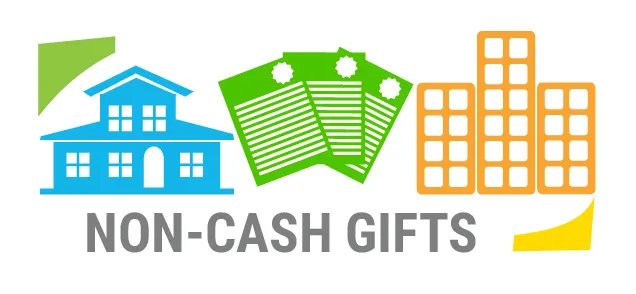
As fundraisers, we are trained to focus on cash gifts. After all, they are the easiest type of gift to make, right? I recently heard a presentation providing some very good evidence that from our donors’ perspective, this might not be the case at all. Professor Russell James III, the Director of Graduate Studies in Charitable Financial Planning at Texas Tech University, analyzed over a million tax returns of both individuals and nonprofit organizations in an effort to see why some organizations report what seems like astronomical growth in their fundraising programs, while others report basically flat fundraising attainment over years. The results were eye-opening: nonprofit organizations that accepted noncash gifts, including appreciated securities, grew their fundraising 6 times faster than organizations that only accepted gifts of cash. Importantly, this increase was seen in organizations at every level of fundraising. Professor James research makes it clear that noncash gifts are key to growth in any fundraising program.
If we take a look at the asset portfolios of our wealthy donors, we begin to see why cash gifts may not be the easiest types of gifts for these individuals to make. As net worth increases, the percentage of that net worth held in cash decreases, because more and more of the high net worth donor’s portfolio will be held in appreciated securities and often real estate. In general, cash only comprises 6-8% of the value of assets held by individuals, yet 90% of charitable gifts are made with cash. There’s our opportunity as savvy fundraisers.
Certainly there are challenges in accepting noncash gifts, especially gifts of property other than appreciated marketable securities. Your department, or your outside advisors, needs to understand and be ready to deal with various challenges, including:
- tax and legal issues
- environmental concerns for gifts of real estate (take note that environmental problems are extremely rare, especially those that aren’t fairly obvious during the course of a simple initial audit)
- management of noncash assets until your organization can resell them (this tends to be a concern more about staff work load than any significant financial risk)
- cumbersome internal gift acceptance processes (if you’re serious about accepting noncash gifts, you’re not going to be able to move fast enough to accept your donor’s offer if you have a board level gift acceptance committee in the way)
- inaccurate perceptions of risk vs. reward (remember, even if you have to sell an asset at below market value, your organization is still receiving a financial benefit because your cash investment in the asset is likely extremely low)
Here are some practical tips for mitigating risk:
- Don’t accept gifts of animals or livestock of any kind
- Don’t accept gifts of anything involved in transportation (cars, boats, motorcycles, snowmobiles, etc.)
- Don’t accept gifts of timeshares or cemetery plots
- Have some outside experts readily available to help you with the tax and legal concerns, and to help manage property/assets until sale if your staff is too busy to take this task on
I encourage you to read Professor James research for more information on the amazing opportunities presented by the ability to accept noncash gifts for your organization.

